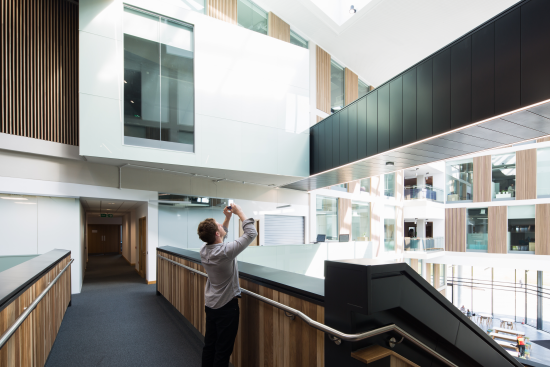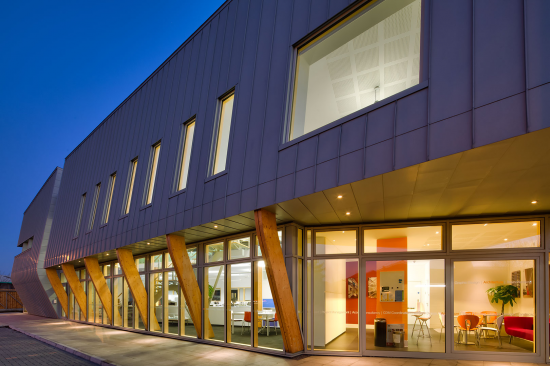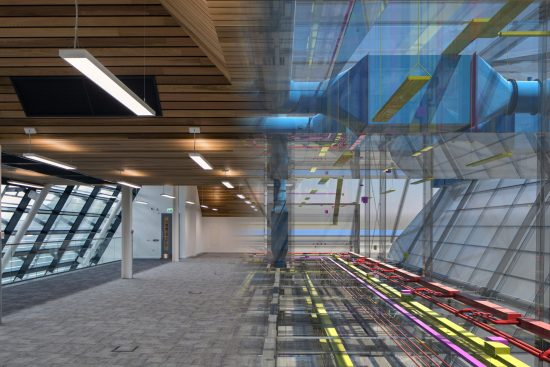Like all professionals, architects have travelled a long way since the pre-digital age. The way we work in our own practice – Stride Treglown, headquartered in Bristol – is today utterly unrecognisable from the way things used to be when we were first established back in 1953. We not only have a completely new box of tools in the form of brute computer processing power and sophisticated software, but the very way we work has been transformed with new procurement routes and delivery platforms too.

This was not an overnight, once-only switch, of course. It has been a gradually accelerating sweep of change that continues feverishly even now.
Amid the constant churn and the head-turning gizmos that accompany it, it’s hard to keep your eye on the ball. Some of these trends are mature and by now inevitable. For example, at the cutting edge of information technology, innovations like BIM, new data protocols, compelling 3D modelling capability, and even immersive virtual reality visualisation are here to stay.
Just a Quick Note:
InnovationsOfTheWorld.com has partnered with Trade License Zone (TLZ) to support global innovators looking to expand internationally. Take advantage of the UAE’s Free Zones—enjoy streamlined setup, low corporate taxes, and a strategic gateway to the Middle East and beyond.
Get Your UAE Free Zone License Fast & Easy!Others trends are less certain but seem like good bets. For example, from across the sectoral divide, advanced manufacturing techniques and offsite production processes promise game-changing boosts to quality, safety, resource-efficiency, and so on.
We’ve invested in both and, indeed, are bearing the fruit with a growing order book and reputation for technological expertise in these areas.

Using Technology in a human-centred way
Since unintended consequences are an ever-present risk, we’re increasingly vigilant as we implement our hard tech innovation. We consult our clients and users, verify our designs with our project partners,
and validate our buildings once they are in use to guard against wrong turns and, just as importantly, improve continuously.
Because human transactions happen at the local scale, localness is our focus at every stage along the development cycle, with technology merely an enabling tool. For example, our unique Inhabitant project is a kind of rolling forum for unflinching user feedback, where we visit the users of the buildings we design to hear what they like and dislike about them, yielding lessons to update our practice.
In collaboration with the University of Bristol and others, our Shaping Future Places Toolkit investigates better, more immersive platforms for town planning to involve citizens in real-time augmented reality co-design, getting them to engage emotionally as well as intellectually in the long term future of their communities.
We’re experimenting with online voting tools to capture client feedback iteratively as we develop the brief. In line with growing expectations for research and university teaching buildings to nudge chance encounters and promote the cross-fertilisation of ideas, we’re validating our work with network analysis tools.

To back up our commitment to be carbon-neutral by 2030, we’ve invested in One Click life-cycle analysis software to minimize the true lifetime carbon cost of all our design choices. Wherever possible, our work incorporates technology to make the environmental impact of user behaviour transparent, including real-time displays of energy use at our solar-powered Cardiff office and water use on taps in schools.
Our soft R&D includes a variety of thought experiments for restoring, maintaining and enhancing connection through places. For example, our Gardenia project reimagined urban blocks as sustainable, connected living clusters in balance with nature. Our Waters of Bath and 52 Big Ideas for Bristol projects applied our hard-won, intimate understanding of these two well-loved cities to conceptualize a better environment for their citizens.
So, while the future of professional technology is indeed about innovative widgets, for us it can only ever be to enable a responsible, ethical desire to restore balance and safeguard connection. With human interaction in crisis as a result of the global coronavirus pandemic, this message is more important than ever.















